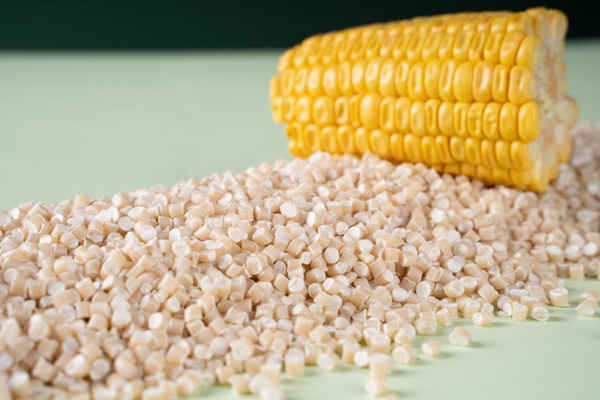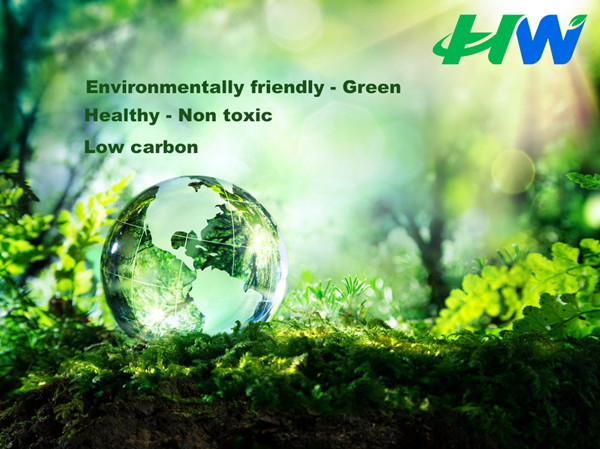1. Starch is one of the most promising natural polymers because of its inherent biodegradability, overwhelming abundance, and annual renewability.
Starch-based biodegradable plastics are water-sensitive, have high water vapor permeability, and generally provide films with mechanical properties unsuitable for many applications.

Starch-based biodegradable & compostable resin is based on a blend of thermoplastic starch (TPS), biodegradable polyesters, and natural plasticizers. This grade of resin is compatibilized to offer a high level of mechanical strength, impact resistance, and toughness. The resin is based on corn starch which is a renewable material. A fully biodegradable and compostable resin Designed to be used for film blowing. The resin can be fully and safely composted at home. Complies with European Standard EN13432, USA Standard ASTM D6400. Australian Standard AS4736, AS5810. The unique advantage of our HW-01 is the low density of only 1.09.
2. In the beginning, the incorporation of any additives is sensitive in developing fully biodegradable starch-based materials. Furthermore, safety issues will be considered a priority regarding any additives for food packaging applications. Based on these concerns, various natural filler and edible reinforce agents, such as natural fibers, starch, or cellulous crystals, have been used in starch-based materials. So-called self-reinforced techniques, reinforcing starch matrix by modified starch particles, have also been used in developing starch-based composites. During developing starch-based foams the unique function of water, acts as both plasticizer and blow agent for starch-based foam, has been systematically studied. So far, various conventional processing techniques such as extrusion, injection, compression molding, casting and foaming, as well as some new techniques such as reactive extrusion, have been adapted for processing starch-based polymeric materials. Various starch-based products have been developed and commercialized.
Development and applications of biodegradable starch-based materials have attracted increasingly attention since the well recognized issues of oil shortage and the growing interest in easing the environmental burden due to extensive use of petrochemically-derived polymers. Currently, more and more countries have introduced regulations and lows of banning disposable plastics.
It is well known that techniques of synthetic polymers have been developed to the point where microstructures can be designed, and molecular weight and molecular weight distribution can be controlled. However, the microstructure of a starch granule has evolved to meet a plant's own needs and is therefore much more complex. Starch is a polysaccharide produced by plants as a means of storing energy. It is stored intracellularly in the form of spherical granules, with 2–100 μm in diameter. Most commercially available starches are isolated from grains such as corn, rice, and wheat, or from tubers such as potato and cassava.
3. Some biodegradable plastics available in the market are:
Starch-based plastics
Bacteria-based plastics
Soy-based plastics
Cellulose-based plastics
Lignin-based plastics and
Natural fibers reinforcement plastic

Starch - raw material is natural: natural Corn starch is used as raw material for sustainable supply so that natural resources can be reused and recycled.
Degradable - Safe and degradable: The raw material is natural polymer compounds that can be degraded in the natural environment.
Environmentally friendly - Green: After use, the product can be quickly degraded by microorganisms in the natural environment, becoming plant nutrients, truly originating from and returning to nature, effectively solving the environmental damage caused by white pollution.
Healthy - Nontoxic: The raw materials are natural, the production process is sterile, and disinfection testing is strict. After product degradation, it will not cause toxicity to soil and air, and there is no harm from secondary pollution.
Low carbon - strong substitutability: can replace plastic products made from petroleum and paper products made from wood.
The difference between bio-based environmentally friendly materials and bio-based starch materials lies in the differences in raw materials and functions.
1. Different raw materials: Biobased environmentally friendly materials are made from renewable biomass such as grains, legumes, straw, bamboo, and wood powder. Biobased starch materials are plastics made by blending starch and plastic.
2. Different functions: Biobased new materials have the characteristics of low raw material cost, saving petroleum resources, excellent performance and lightweight, achieving material lightweight, recyclable degradation, and good environmental protection. Biobased environmentally friendly materials can solve the environmental pollution problem caused by traditional petroleum-based materials
